Objects of daily use, certainly higher price-end objects of daily use, don't just sell on the basis of what they physically are and what they physically do — possible alternatives are generally far too numerous for such to be decisive in itself — but also sell on their semantics: what the potential purchaser believes an object says about them, how the potential purchaser believes others will read their possession of such an object, the associations the potential purchaser makes in context of a particular object.
Thus, arguably since the glory days of the Hanseatic League in the 14th and 15th centuries, those first international traders, the staging of objects of daily use, and more so the staging of higher price-end objects of daily use, has been a key practice of the mercantile process.
A mercantile practice that the development of photography as a medium for transporting and mediating not just the image of the physical object but the semiotic intent of the staging of the object... revolutionised.
A word we don't use lightly, technically never use, but in this case feels correct.
Or more accurately, feels correct having viewed Hello Image. The Staging of Things at the Museum für Kunst und Gewerbe Hamburg.......
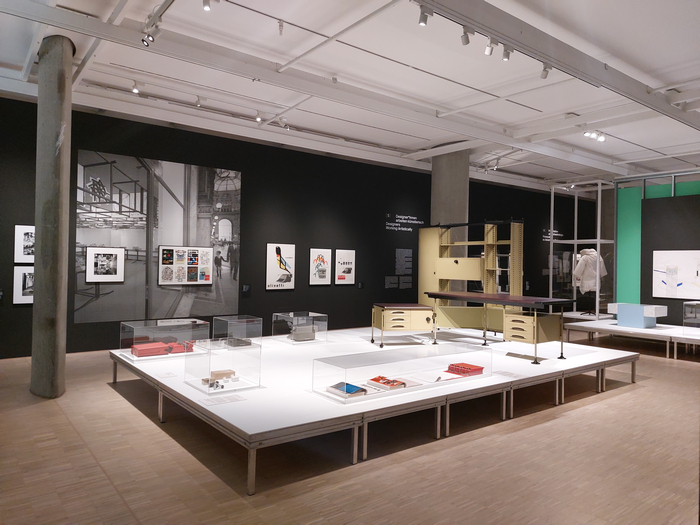
For all that photography originated in the early 19th century, as the opening chapter of Hello Image. The Staging of Things argues, it took a (relatively) long time for photography to become a standard medium in product presentation and marketing.
And that not least, so the curators' argument, on account of the Graphic Art of the opening chapter. On the question Graphic Art or Photography? that was regularly posed in the earliest years of the 20th century, or at least the opening chapter of Hello Image assumes, as a conceit to stimulating a discussion, was regularly posed in the earliest years of the 20th century, as photography as a marketing tool, as a staging tool, became viable, became interesting, offered new possibilities, but... but... but...
But was new.
Was different.
Broke with convention.
Might not be accepted by consumers.
That question of the risks of change in the form of presentation, the visuals of presentation, the language of presentation, the risks of changing that which all have become conditioned through experience to accept, that is a permanent companion of all businesses, of all who require customers for their existence.
And so, as Hello Image argues, throughout the 1910s and 1920s a great many companies choose to remain with the trusted Graphic Art rather than risk the novel Photography; whereby, one must note, Graphic Art was also once a novel development: the aforementioned Hanseatic League had but the object and the sales pitch, the verbal dexterity, of the individual agent via which to stage their wares. Then came the... revolution... of graphic depictions, a new tool whose agency can be assessed by, for example, the (hi)story of the late 18th/early 19th century Journal des Luxus und der Moden, a publication based in Weimar which, as discussed by and from Wohnen at Klassik Stiftung Weimar, and in context of Goethe's chair "just high enough that one can sit half-standing", was an important tool in staging novel clothing and furniture positions in the late 18th/early 19th century in the lands of the contemporary Germany, and thereby in selling those novel positions to the good, and wealthy, citizens of that late 18th/early 19th century. Something attested to by the examples of furniture to be found in the various palaces and townhouses around Weimar that once featured as sketches, as Graphic Art, in the pages of Journal des Luxus und der Moden.
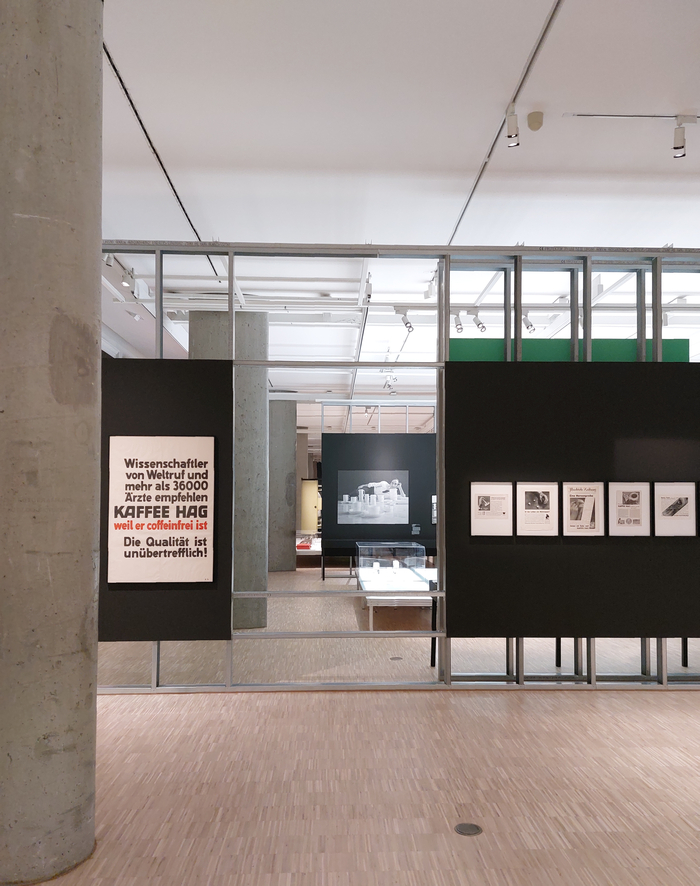
However, as Graphic Art or Photography? discusses, with time the photo, slowly but surely, established itself as the preferred medium for staging, and that, as the second chapter Finding a New Form argues, in no small measure thanks to developments in context of photography as an art, specifically the Neue Sachlichkeit, the Neues Sehen, of the 1920s, with its associated stimulations of both an interest in photography amongst creatives, an increase in the standing of photography as an art practice rather than a technical process, and, certainly one presumes, an associated increased interest in photographs amongst a wider public, an increasing acceptance of photography as not only art but as a component of daily life.
And an establishing of Photography over Graphic Art also aided and abetted by the rise of the novel materials and novel formal expressions in, of and for objects of daily use, and the novel positions on and to relationships between objects of daily use and their users, collective and individual; novel objects, novel Things, that, in many regards, demanded novel presentation approaches to reinforce their novelty, their break with the past, and thereby to help stage the owner of such objects in the brave new world of tomorrow, to remove them from the dusty and antiquated world of yore.
A discussion in Hello Image on not so much Finding a New Form as A New Form Found and Presented in a New Media that has a heavy focus... pun intended... on the Bauhauses via objects by the likes of Wilhelm Wagenfeld and Marianne Brandt alongside photographs by Marianne Brandt, László Moholy-Nagy and Lucia Moholy. The latter represented by both raw photos and post-processed Bauhaus marketing photos that help not only reinforce why, as discussed by and from Lucia Moholy – The Image of Modernity at the Bröhan Museum, Berlin, Moholy was so important to the Bauhauses then, and remains so important to the Bauhauses today, despite never having been a formal member of the staff or student conclaves at Weimar, Dessau or Berlin, but also remind that, and as oft discussed in and by these dispatches, noxious and problematic as much of the contemporary 'Bauhaus' marketing unquestionably is, the use of 'Bauhaus' to sell things, it's as old as the Bauhauses: Walter Gropius was always acutely aware of the importance of staging the institutions and never knowingly failed to take advantage of an opportunity. Or to take advantage of Lucia Moholy's glass negatives.
Photos by Moholy that also help elucidate, as discussed by and from Lucia Moholy: Exposures at Kunsthalle Praha, Moholy's oft undervalued, only rarely acknowledged, role in developing photography as both an objective documentary practice and the subjective aesthetics of photography, be that in art photography or product photography.
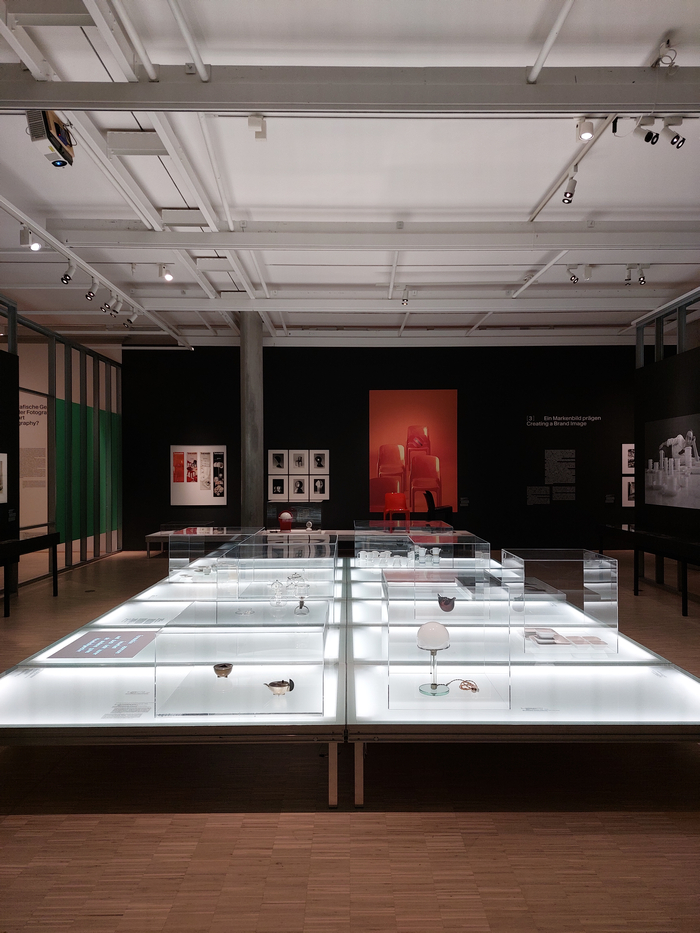
A role, one must add, also played by László Moholy-Nagy, something much more widely and popularly acknowledged than the role of Lucia. László is after all a man. 🙄
And a role of László that can be assessed in Hello Image via his mid 1930s promotional photos, staging, of a tee service by Wilhelm Wagenfeld for Schott Jena, photos which very neatly underscore how the photographic experimentations of the period enabled the novel materials, forms, positions to be brought to the fore in a manner that would have been unimaginable with Graphic Art. And thus helped reinforce that while Wilhelm Wagenfeld's work for Schott was glass, it wasn't glass as produced by artisans since time immemorial. Wasn't the glass of generations past.
A Wilhelm Wagenfeld who is also a component of Hello Image's discussion within the chapter Creating a Brand Image on German ink manufacturer Pelikan's commissioning of avant-garde orientated creatives of the 1920s and 30s to stage and market their products: a discussion that aside from presenting Wagenfeld's 1938 pressed glass inkwell, an ever joyous example of user-experience product design via observation, of design improving that which exists without impacting on the process, of thinking outwith the constraints of convention, and that design is more often than not concerned with the small and easily overlooked Things of life, also includes adverts, Graphic Art adverts, for Pelikan by El Lissitzky and a special 'Pelikan' edition of Kurt Schwitters' publication Merz. Which, no, isn't very Dada: but does neatly reinforce that creatives need to be paid, that avant-gardes rarely are until they are old and grey, or dead, and that advertising has long been one of the more reliable sources of additional income for living avant-garde creatives. One thinks also, for example, of the advertising works created by Xanti Schawinsky as seen in Play, Life, Illusion. Xanti Schawinsky at Kunsthalle Bielefeld or those by Lukáts Kató as seen in Kaesz Homes 1925-1960. The homes of designer couple Kaesz Gyula and Lukáts Kató at Walter Rózsi Villa, Budapest.
And a use of contemporary avant-gardes by Pelikan, and by Schott Jena, and by Walter Gropius, and by Kaffee Hag in the person of that so defining object and architecture photographer of the 1920s Albert Renger-Patzsch as discussed in the chapter Graphic Art or Photography?, that is also indicative of an association of brands with individuals, movements and challenges to convention, etc, the development of a Brand Image based on associations with individuals, movements and challenges to convention, etc, in the 1920s and 1930s that, Hello Image tends to imply, is one of the more widely ignored innovations of that period, and which, a convincing argument can be made, over time superseded the product as the focus... sorry... of the photo, superseded the product as the primary component of the transportation and mediation function of the photo. Became the more important component, consideration, of the staging. A key component of a staging Photography enabled.
An argument very much made in the chapters Provocation as Advertising Strategy and Self-staging.
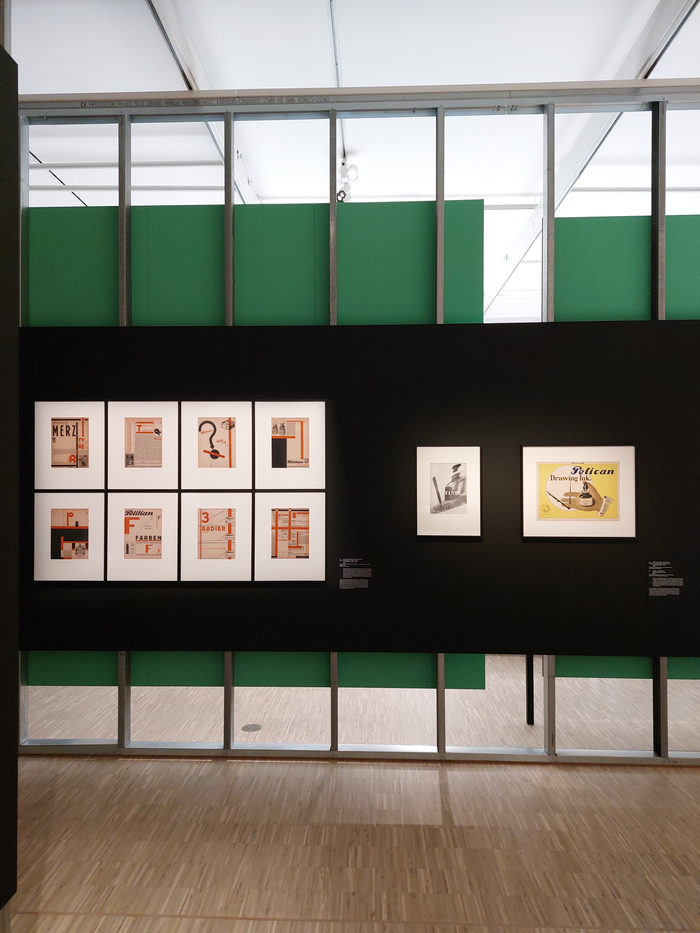
The latter including a... focus...last time...promise... on Charles and Ray Eames, a couple who, and whatever else they are and were, were masters of self-staging, are inseparable from their products, were, are, and always will be inherent components of their products. Whenever one thinks of Charles and Ray Eames' object, Charles and Ray are also there. Indeed an argument can be made that while Charles and Ray may not be natural successors of a Walter Gropius in terms of design processes, the formal aesthetics of objects, relationships with objects, etc, they are his heirs in context of appreciating the importance of staging oneself and ones work, and of using any and every opportunity to connect your products with you (your school) as the brand.
And that as with Gropius, the Eames appreciated the peerless value inherent in the photograph as a staging tool appropriate for their age. Whereby the Eames used their own photos (and, credited, photos by Eames Office team members) in their staging rather than abusing those of a Lucia Moholy. Big difference.
A photography employed by the Eames in staging themselves and their work that was also very much at the heart of the Eames practice, something tending to be reinforced by the fact that, as discussed by Eames & Hollywood at the Art & Design Atomium Museum, ADAM, Brussels, the Congressional Library in Washington houses some 750,000 photos by Charles and Ray: we'll leave you to do the math to calculate how many a year that is on average, but prolific barely begins to describe their photography. And that in an analogue age. And an appreciation of the importance of staging in the Eames' practice, of a competence in the practice of staging on the part of the Eames, underscored by the fact that a large, and regularly overlooked, part of the Eames' oeuvre is and was producing exhibitions, often exhibitions (positively) staging protagonists such as Nicholas Copernicus, Jawaharlal Nehru, Thomas Jefferson & Benjamin Franklin or companies, most notably, and regularly, IBM. And often staging those protagonists with cutting-edge novel technology and processes, novel visual technology and processes. The Eames rarely relying on that which everyone else did or that which convention demanded.
Which, yes, can be very hard to remember these days with its conventionalised re-telling of a stubbornly one-dimensional Eames narrative.
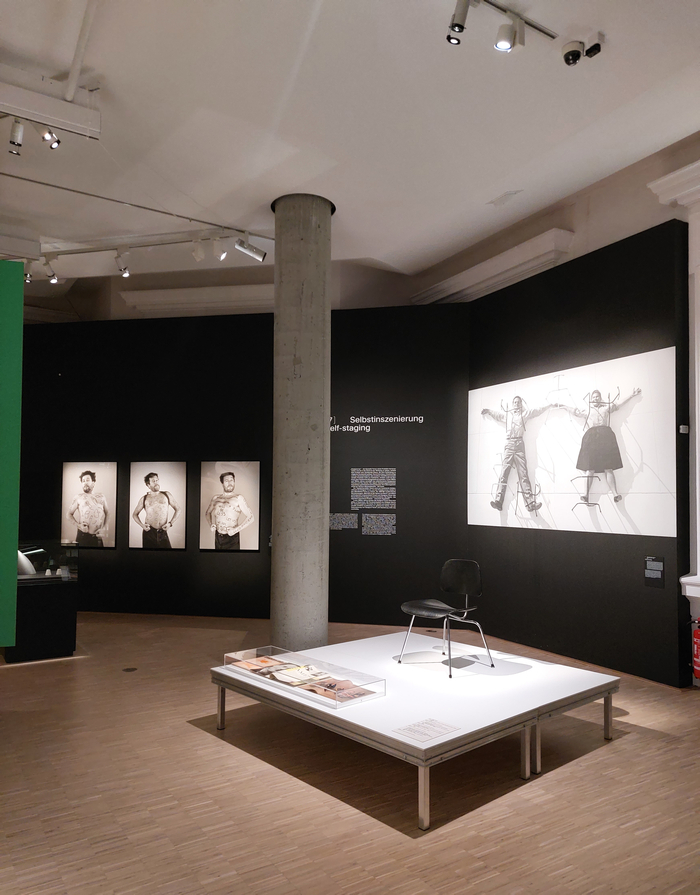
And a chapter on self-staging that also features, not one, not two, but three Philippe Starcks as larger-than-lifesize photos. A fitting presentation of and for a designer who, unquestionably, stands as one the better examples of not only a designer as a brand but of a designer-brand companies turn to in the belief the association with a name will bring them advantages. That process that begins in Hello Image with Pelikan's cooperations with a Wagenfeld, an El Lissitzky, and a Schwitters and can, inarguably, be followed into today via the sneakers of a company such as Nike, a state of affairs that could be effortlessly followed in the final chapter of Nike: Form Follows Motion at the Vitra Design Museum, Weil am Rhein, with its array of limited editions, collaborations and Special Make Ups in which associations with a name, a brand, is and was the only the recommendation to purchase any and all of the presented shoes. And on the way between then and now encompassing, amongst other examples, Schwarzwald based electrical consumer goods manufacturer SABA's (not discussed in Hello Image) commissioning in the early 1990s of Philippe Starck in the hope that he could turn their fortunes around. Which he didn't. Couldn't.
As noted from Mythos SABA - Memories of a Global Company at the Franziskanermuseum, Villingen-Schwenningen, the so-called Jim Nature television Starck created for SABA was not uninteresting nor uninformative with its recycled pressboard case, a material that, then, was novel and forward looking in consumer goods that still tended to ignore a problem they were a large part of; but as a cathode-ray tube television was an inherently backward looking genre of consumer good in an early 1990s grasping after digital, LED technology. Which isn't and wasn't Starck's fault, but SABA's. SABA's reading of the market was wrong. SABA's strategy was wrong. Wagenfeld's Pelikan inkwell was not only novel, improved the existing, but was part of a wider, integrated, coherent, strategy linking the brand with design, linking the brand with avant-gardes in all dominions of the company's communication. SABA's was a lot more hopeful, based on a belief that a couple of products with the name 'Starck' would save them. On a belief that which was once popular would remain popular. Hoping that shouting loudly at a trade fair would be enough. Believing that catching the popular attention with a limited number of disjointed communication projects was enough. A strategy which, with the benefit of hindsight, was never going to work.
Thus a comparison of 1930s Pelikan and 1990s SABA that can be instructive and informative.
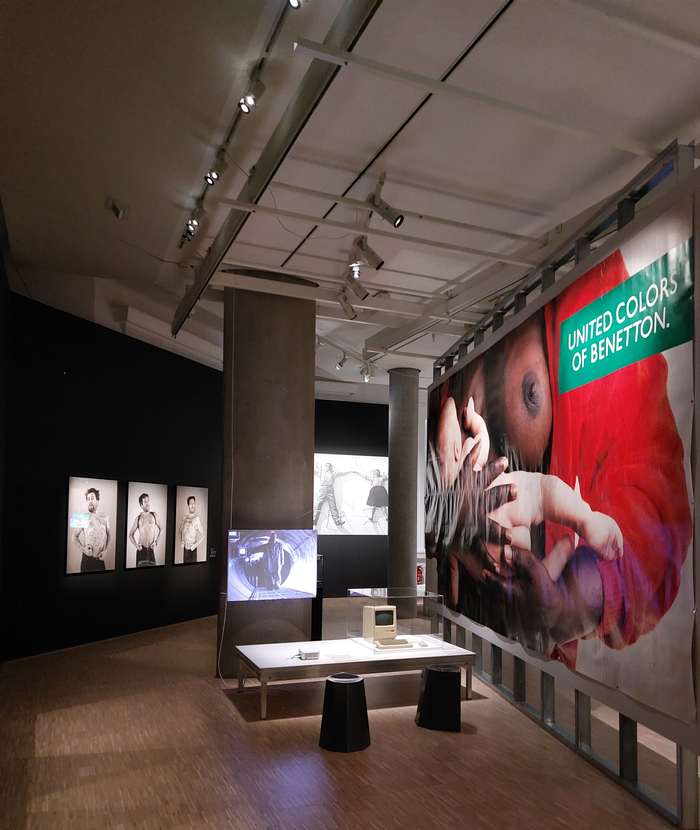
And a Philippe Starck who, as discussed by and from Années 80. Mode, design et graphisme en France at the Musée des Arts décoratifs, Paris, was one of several bywords for provocation in a 1980s Paris that, looking back from the 2020s, appears to have only known provocation. A Parisian provocation that was a regional dialect of a wider provocation of the 1980s as the energy released from the revolting youth of 1968 boiled every faster towards its inevitable implosion in 1989. A Parisian provocation famously employed by the French government via the commissioning in the early 1980s of the likes of Annie Tribel, Marc Held, Jean-Michel Wilmotte or Philippe Starck to furnish rooms within the Élysée Palace. Provocation as location marketing, as national identity, as a very specific form of Brand Image.
But a Philippe Starck, for all he is/was a synonym for provocateur, not discussed by Hello Image in its chapter Provocation, rather the chapter concentrates on the late-1960s adverts for Levy's Real Jewish Rye Bread by Judy Protas with their playing on and with racial tropes and stereotypes in a proudly multi-cultural New York; by Oliviero Toscani's photos for Benetton with their demands one be outraged; or by Ridley Scott's 1984 TV commercial for Apple whose claim that with the launch of Macintosh "you'll see why 1984 won't be like 1984" forces you to consider 2025, how global society has developed since 1984, Apple's role in those developments, Apple in 1984, Apple in 2025, the world Apple has helped co-create. And what George Orwell would make of the world today.
Provocation that also finds an echo in the 1980s works of Hamburg based collective Möbel perdu as presented in the chapter Engaging in Dialogue. A very welcome, pleasingly and satisfyingly wide ranging presentation of works by the members of Möbel perdu, a criminally rarely discussed grouping, that through the introduction it enables to an aspect of the neue Deutsches Design of the 1980s provides an alternative context in which to view the three larger-than-lifesize photos of larger-than-life Philippe Starck that stand in the near vicinity. An extended viewing of positions on and to design in the 1980s also enabled by the discourse between Starck, Möbel perdu and the near-by photos of Andreas Weber, Herbert Jakob Weinand and Wolfgang Laubersheimer with their alternative positions on neue Deutsches Design. The latter a trio who also allow for reflections on Provocation as Advertising Strategy and Self-staging in the (hi)story of Nils Holger Moormann [person and manufacturer].
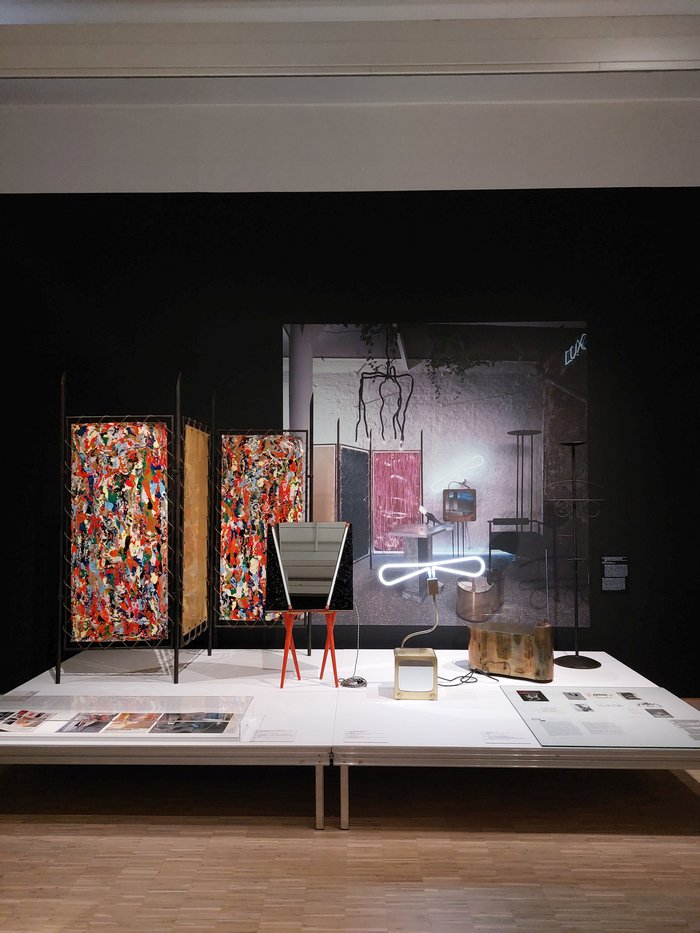
And a discussion on Möbel perdu which via the conduit of the invitation to a vernissage in Hamburg's Galerie Möbel perdu in June 1990 featuring works by Jasper Morrison and Ginbande realised in context of the Vitra Edition platform, reminds of what Vitra used to do, who Vitra used to be, the risks Vitra used to take, the challenges to convention Vitra used to be a platform for, before Vitra changed the manner in which it staged itself, changed the manner in which it staged its products, changed how it related to the world outwith the Vitra Campus. Changes at Vitra instructive and informative of wider changes in the designer furniture industry in the 30+ years since Morrison and Ginbande premiered at Galerie Möbel perdu.
A linking of Morrison, Ginbande and Vitra that is also a reminder that the success of Vitra, and Nils Holger Moormann, is based on long-term cooperations with a wide variety of creatives with an equally wide variety of positions and approaches, on Engaging in Dialogue. On engaging in a wide dialogue. And also based, to a degree, on Engaging in Dialogue with the Designers Working Artistically of Hello Image's chapter with its reflections on, for example, the 2022 cooperation between clothing creator JW Anderson and ceramicist Magdalene Odundo and artist Shawanda Corbett, or the Memphis period works of an Ettore Sottsass, himself a not uninformative Vitra dialogue partner.
And a Sottsass whose Valentine typewriter for Olivetti as presented in the chapter Creating a Brand Image provides for alternative reflections on that aforementioned reality that creatives, for all those pushing at borders of convention, are invariably dependent on more commercial commissions to pay the rent: over the years Olivetti have provided a steady commercial income to a wide range of Italian creatives that enabled them to develop their own avant-garde practice in a period before society was prepared to pay for that not-yet-conventional which they proposed. And for which we should all be thankful to Olivetti.
Designers Working Artistically that also takes one back to the 1920s and 30s, those early days of photography as a staging tool, those early days of design as a practice, and to questions of how the relationships between design and art have developed over the past century, how developing relationships between art and design over the past century have contributed to developments in art and design. That subject also discussed, from alternative, primarily Danish, perspectives, in and by The Magic of Form - Design and Art at Kunsten Museum of Modern Art, Aalborg.
Reflections on the century past that very naturally and effortlessly admonishes one project the themes and discussions on which Hello Image is constructed into an array of speculative futures.
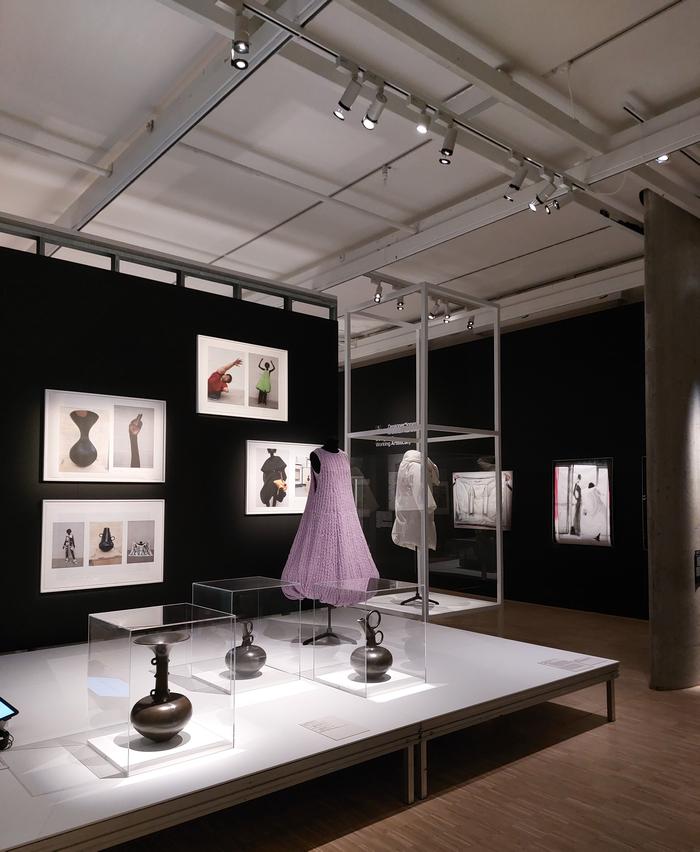
A sprightly, but not over-taxingly so, presentation that moves effortlessly from chapter to chapter, often without you noticing, which is in itself a very satisfying piece of exhibition design, aside from its primary narrative Hello Image also very neatly introduces you to some of those who have contributed to ensuring the necessary monetisation of design processes, those who make the object functional in a staging as well as a practical in use, that key to to the mercantile process, but individuals who are only very rarely allowed to shine in their own right.
And that also through the presence of, amongst others, a Ray Eames, a Lucia Moholy, a Claudia Schneider-Esleben or a Margarete Jahny reminds that for all the Image we have of design (hi)story appears to be a piece of exacting photographic evidence beyond repute. It ain't. Photos only lie when actively manipulated to do so, but unminipulated only rarely tell the truth, the whole truth and nothing but the truth. Another recurring theme in Hello Image.
A presentation in which each of the chapters contains a thematic chronological path though the (hi)story of the photograph as a tool in staging objects of design. Thus, for example, in the chapter Finding a New Form the 1920s and 30s photographs by Marianne Brandt, László Moholy-Nagy, Lucia Moholy, et al are presented alongside 1960s and 70s works by Aldo and Marirosa Ballo for Artemide, Ballos who, as discussed by and from Zoom. Italian Design and the Photography of Aldo and Marirosa Ballo at the Vitra Design Museum, Weil am Rhein, played an important role in establishing the global reputation of the design from Italy of the 1960s and 70s, or as we opined in 2011, "their images spoke to a new European generation looking to move on from the styles and furnishings of their parents", words penned as if we knew the Museum für Kunst and Gewerbe Hamburg were planning an exhibition in 2025 on photography and design and staging, while elsewhere in that text one reads an innocence and naivety that helps elucidate how we've developed since 2011, how much older we were then; or in Creating a Brand Image Otl Aicher and Hans Hansen's 1970s work for Lüdenscheid based lighting manufacturer Erco stand in dialogue with Wilhelm Wagenfeld, El Lissitzky, and Kurt Schwitters' 1930s works for Pelikan, and also remind of that period, as discussed by and from Luigi Colani – Shapes of the Future at Marta, Herford, when Westfalen was the centre of the, then, West German furniture and interiors industry. An important, but sadly long since forgotten, moment in the (hi)story of furniture design in the contemporary Germany. One that needs to be rediscovered.
While the chapter Graphic Art or Photography? includes not only an introduction to Albert Renger-Patzsch's 1920s work for Kaffee HAG but also Peter Keetman and Michael Engelmann's 1950s works for Pirelli tyres in which time-lapse and multiple exposure are employed to create effects that although clearly not Graphic Art, could be. Arguably want to be. And would be, but Photography provides the better result.
A chronology within the chapters which aside from aiding and abetting the elucidation of the staging of higher price-end objects, of works by designers, Hello Image sets as its goal, also poses a lot of questions of why we accept the staging, why we let ourselves be conditioned by something that we don't need a museum exhibition to explain to us. An exhibition on staging we don't need because we all know the staging is there, is the raison d'etre of the photo.
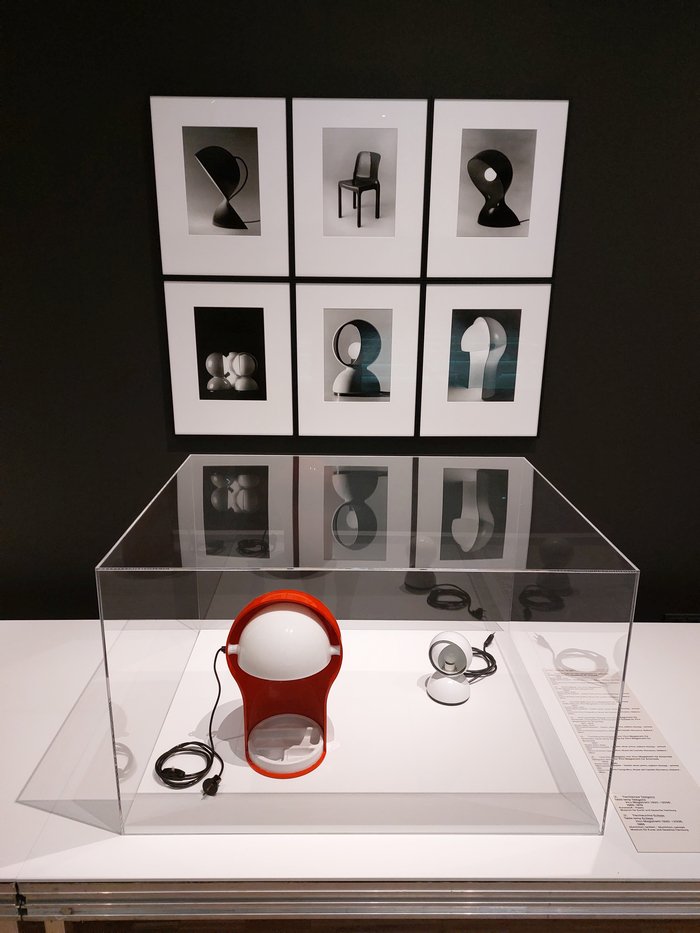
Back in the day, when photography was still a novel medium, only very few understood how the photos of a Marianne Brandt, a László Moholy-Nagy, a Lucia Moholy or an Albert Renger-Patzsch were realised, far less their agency, the messages they transmitted. Similarly the photos of a Peter Keetman and a Michael Engelmann in the 1950s or those of an Aldo Ballo and a Marirosa Ballo in the 1970s, the latter works, and despite what we (erroneously) wrote from Zoom. Italian Design and the Photography of Aldo and Marirosa Ballo — once again we evoke a John Ruskin's contention that he was "never satisfied that I have handled a subject properly till I have contradicted myself at least three times"1 — that were deliberately devised to stage the objects but which was then only poorly understood by the viewer. Similarly the amount of work, pre-, intra- and post-production, that went into realising the desired result wasn't understood, be that in the 1970s, 1950s, 1920s. The craft of the photographer that was at work to support the black arts of the marketeer.
But today we all know how photos arise, can all read the intent of a photo, know why it is, how it is and what its meant to sell us.
Something tending to underscored by the discussion on the Mayday lamp by Konstantin Grcic for Flos with its juxtaposition of a heavily stylised image of a smartly dressed and carefully posed individual inspecting their car engine with a Mayday and a grubby mechanic working under a car with the aid of a Mayday: you understand the different approaches, appreciate how the staging as been achieved, can follow the decision making process, know why both approaches were used, can place the two images in dialogue, see the semiotic intent before it arrives, judge them as alternative positions on presenting the Mayday in context of a lamp genre to which it is related but also inherently far removed. You see it all.
We can all read staging. ¿But do we?
Or rather, how do we?
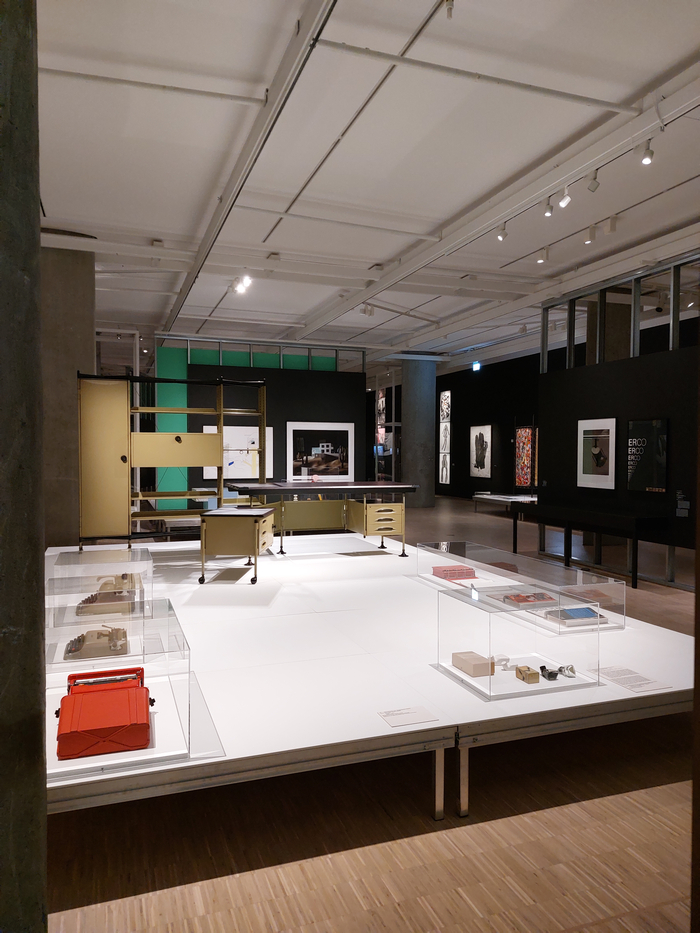
Viewing the chapter Provocation, for example, you can't help thinking that provocation really shouldn't work today, that we all now appreciate what the brand want, can all see the process behind the provocation, arguably could all see the provocation being developed as a strategy over innumerate pre-production meetings in context of Oliviero Toscani's photos for Benetton. The carefully managed intention to provoke is arguably more in the foreground of Toscani's photos than the provocation itself. But we were all still provoked. And today are still effortlessly provoked by stagings. If one must also add today less so in context of objects of daily use.
And thus also note that in context of objects of daily use there is today a greater desire in staging to conform; a shift from provocation to conforming that, arguably, stands as an indication that of late we've arrived, in terms of objects of everyday use, in an era devoid of the novel, for all the novel positions, the novel relationships, the novel formal expressions, that, as Finding a New Form intimates, were so important in allowing, empowering, not only Photography to supersede Graphic Art in the 1920s and 30s, but a rise in provocation as a tool to Creating a Brand Image. ¿From where could the stimulus arise today to provoke in context of objects of daily use? ¿How can one provoke today with objects of daily use? ¿Who is provoking today in context of objects of daily use?
See also the above expressed opinion on Vitra's contemporary staging of itself. Would Vitra build the VitraHaus today? Would Vitra let a Ron Arad bash up steel today? Would Vitra cooperate with a Verner Panton today? And if so, why? ¿How are individuals, movements, as staging partners selected today by not just Vitra but by all manufactures of the work of designers? ¿How has that changed in recent decades? ¿Why?
Then there's the emotion that photos invariably transport as part of Creating a Brand Image. An emotion whose staging is screamed from every pixel. That simply shouldn't work today. Yet which we accept as genuine emotion. Or the ubiquitous homestorys: we all know they are staged, all know they are carefully choreographed and planned. Shouldn't accept them as anything but. Yet willingly accept them as spontaneous snapshots of someone's actual life. Which they're not.
¿Why? ¿Why do we do that? ¿And if we stopped doing that?
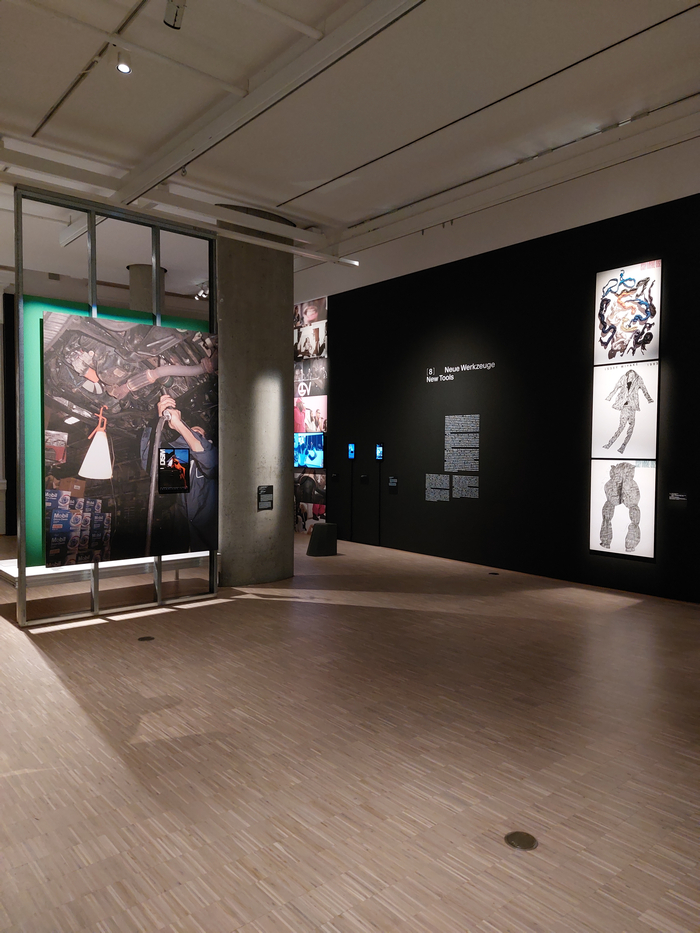
Questions that Hello Image tends to admonish we all should have posed long before the rise to dominance of the New Tools of the final chapter with its discussion on smartphones, social media and digital technology. A discussion that one automatically, naturally and effortlessly expands from the contemporary examples presented to introduce AI as the coming future of staging. As the coming future of photography. Of image generation. The AI generated image as the ultimate New Tool of staging.
And New Tools that have seen staging in photographs shift from something that manufactures, retailers, designers did, to something we all do. All the time.
The staging of the home, of one's private life, may, conceivably, be traceable back to the Hanseatic League, we weren't there, we don't know, but we imagine staging of one's home and goods and life was a major occupation of the wealthy and powerful in the 14th century, and certainly was by the late 18th century of Journal des Luxus und der Moden; but contemporary mobile digital technology and social media has not only escalated the possibilities of staging, transformed how staging is undertaken and disseminated, but made staging our homes, our goods, our lives a component of daily life as much as our objects of daily use. Has made it something accessible for all, and which we have embraced as naturally as we once embraced walking on our hind legs. Has made our homes, goods, lives, private spheres Things equivalent to the public Things of commerce.
Which poses the question, if despite knowing full well commercial promotional photos are staged, we're still able to read commercial promotional photos as a staging? Or if because everything is staging we read the staged as real. Can no longer discern the conceptual difference.
Contemporary political discourse, contemporary political staging as a substitute for political discourse, would tend to imply we do.
Certainly the popular global response to a contemporary political staging whose possibilities and opportunities have escalated through the rise of New Tools as much as the staging of objects of every day use, and our private lives have, and a contemporary political staging that is, arguably, that form of staging where Provocation is most regularly and passionately found today, and is, invariably, as easily read as in Oliviero Toscani's photos for Benetton, would tend to imply we do. And has made the myriad components of global and local society Things to be permanently and ubiquitously staged.
¿Why? ¿Why do we do that?¿What if we stopped staging?
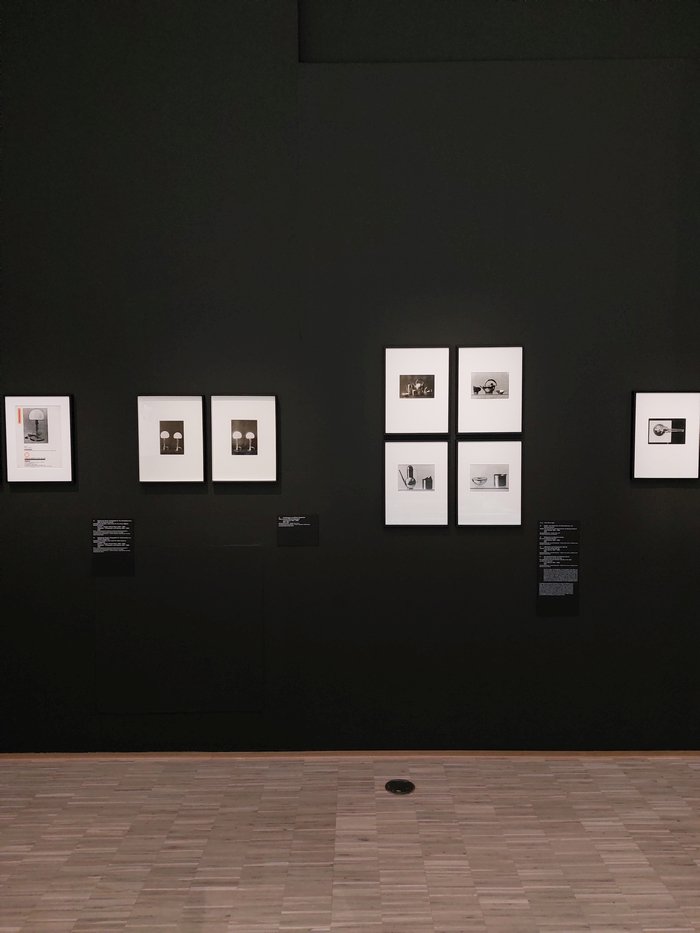
Hello Image doesn't approach that question.
However, aside from taking you behind the velvet curtain of the advertising of higher price-end objects, of works by designers, and thereby illuminating the processes, intentions, occasional disingenuousness, of staging, by taking you back to that moment in social, technical, cultural, mercantile (hi)story when staging via photography arose and then accompanying you on a photograph-led journey to today, Hello Image very neatly enables you to approach that question. Is an admonishment to reflect more intently on staging, that of others and that of yourself.
And thereby to approach the question if we need staging today?
A staging that is, inarguably, related to the ego, that so dangerous of human faculties. And also related to a need for group affiliation, the need to belong to a tribe. A need that was dangerous in the 14th century of the Hanseatic League and remains so today.
Or put another way, as a global society can we afford to continue making decisions, be they consumer decision, political decisions, social decisions, personal decisions, interior design decisions, clothing decisions, based on stagings and associations, on symbolism and a conditioned groupthink? Is that a sustainable path forward for society and the planet?
Or if after centuries of staging we haven't reached a moment where we must begin to engage with Things of all types on more objective levels rather than through an objective lens. Itself a term well worth playing with.
If in an age of AI that will challenge the supremacy of the photograph much as the photograph once challenged graphic art, which once challenged verbal dexterity, the photograph might not have run its course as a medium for transportation and mediation of information, and that we could, should, must focus... sorry... we know we promised... a little more on the tangible that an Image seeks to, but can never, capture.
Started to say Hello to Things of all types rather than to their Image.
¿What if we stopped staging, in all contexts, and started discussing openly, honestly, directly?
And thereby left photography to artists and documenters whose use of photographs can positively contribute to those discussions rather than standing proxy for them.
Yes, such is
New.
Different.
Breaks with convention.
Comes with risks.
But might be beneficial for us all, individually and collectively.......
Hello Image. The Staging of Things is scheduled to run at the Museum für Kunst und Gewerbe Hamburg, Steintorplatz, 20099 Hamburg until Sunday April 12th.
Full details can be found at www.mkg-hamburg.de
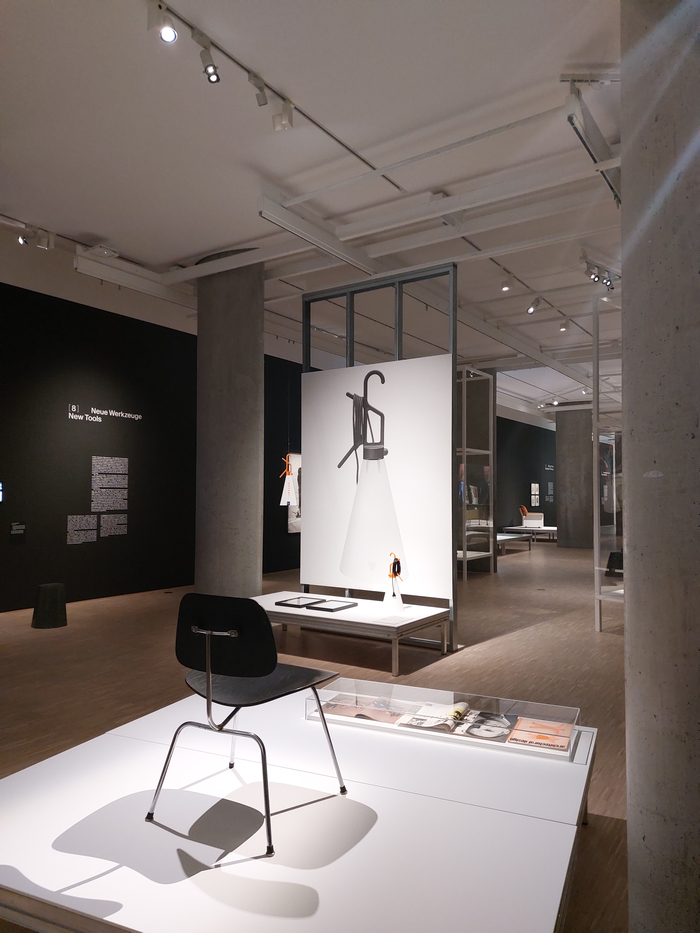
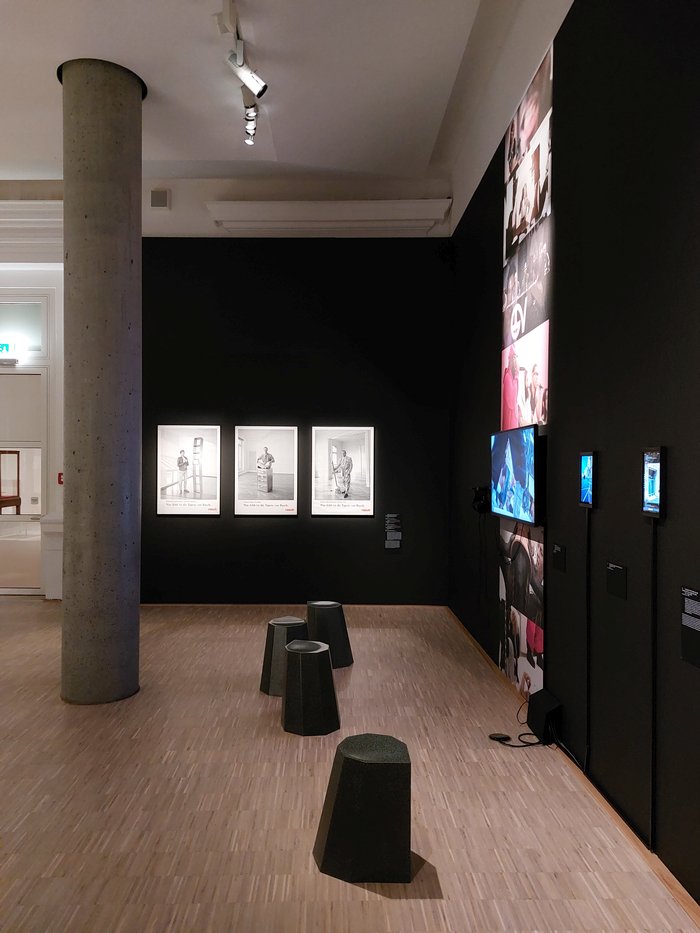
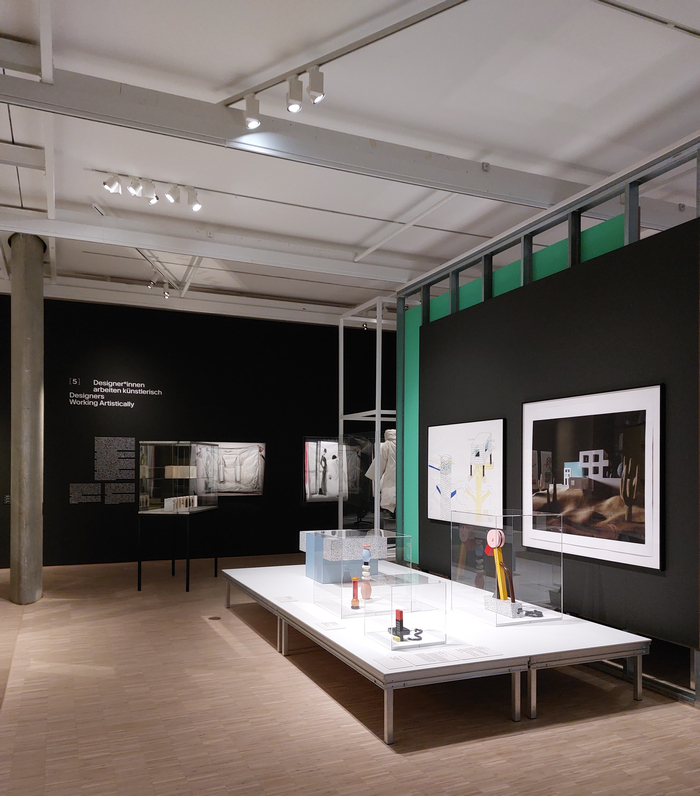
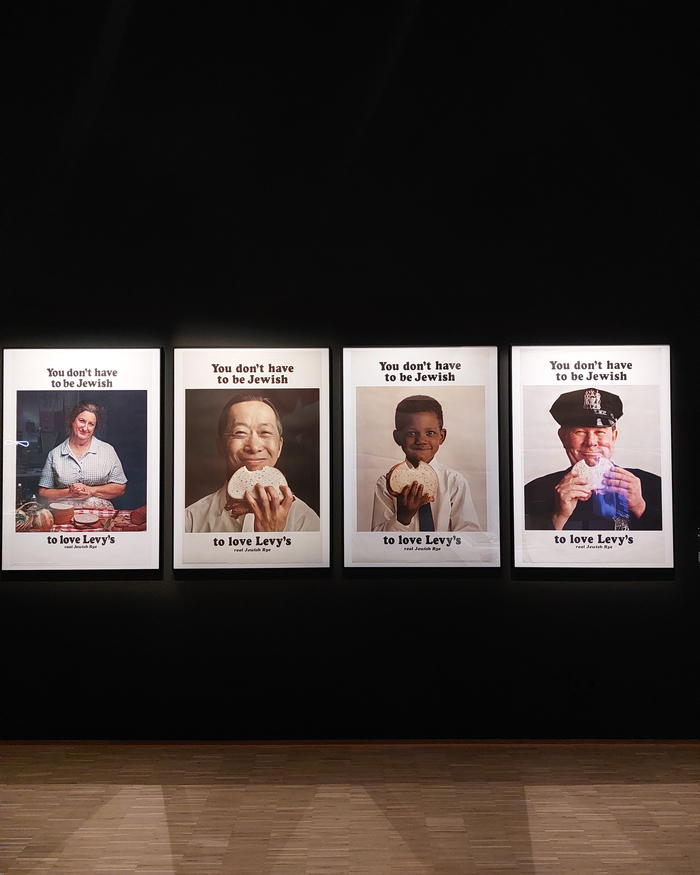
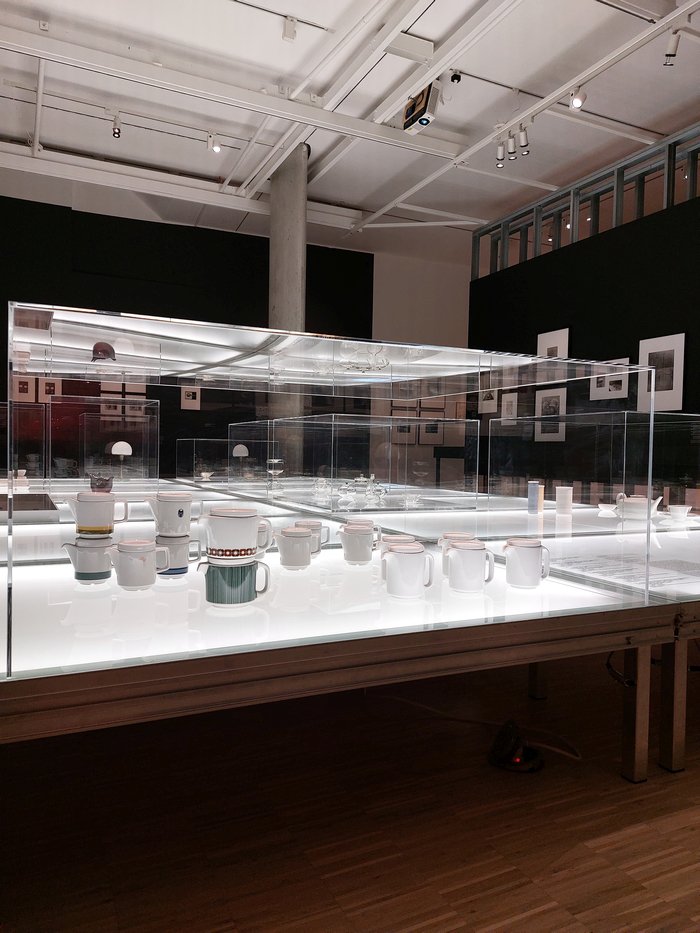
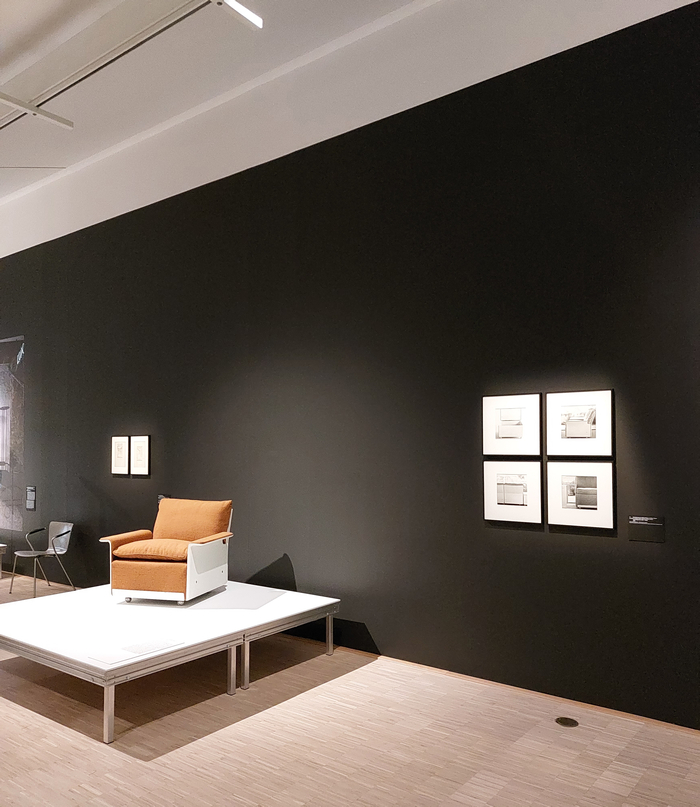
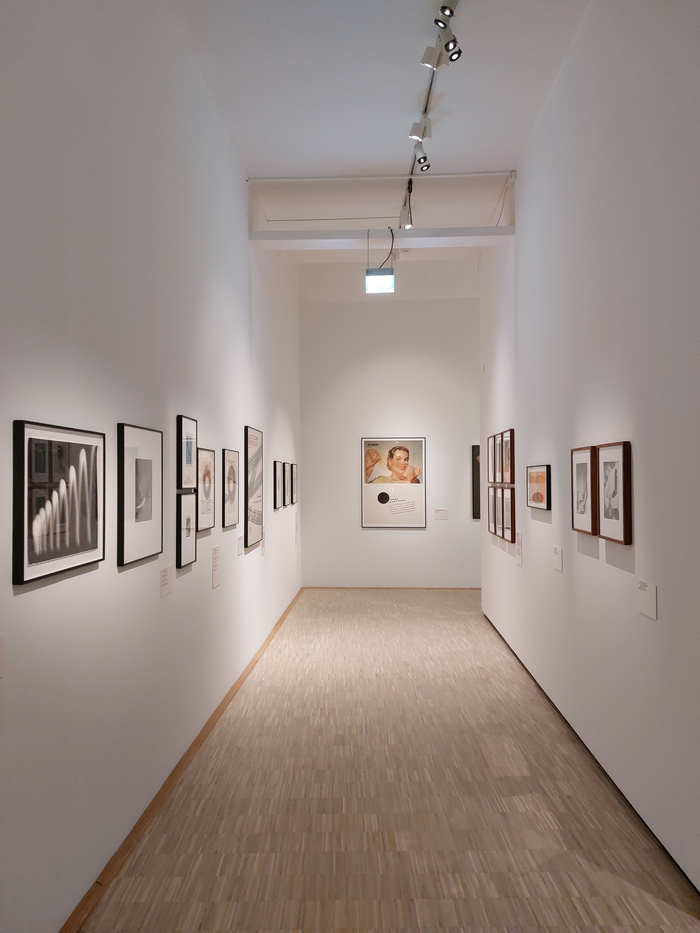
1John Ruskin, Cambridge School of Art: Inaugural Address (1858), reprinted in Dinah Birch [Ed.], John Ruskin. Selected Writings, Oxford World's Classics, Oxford University Press, 2004, page 100